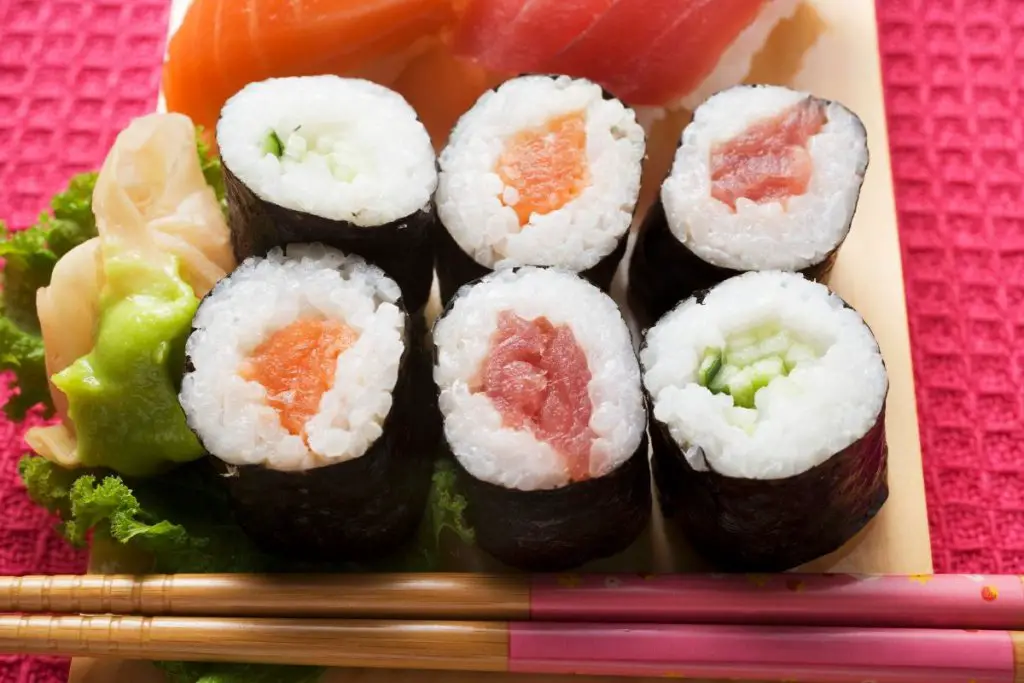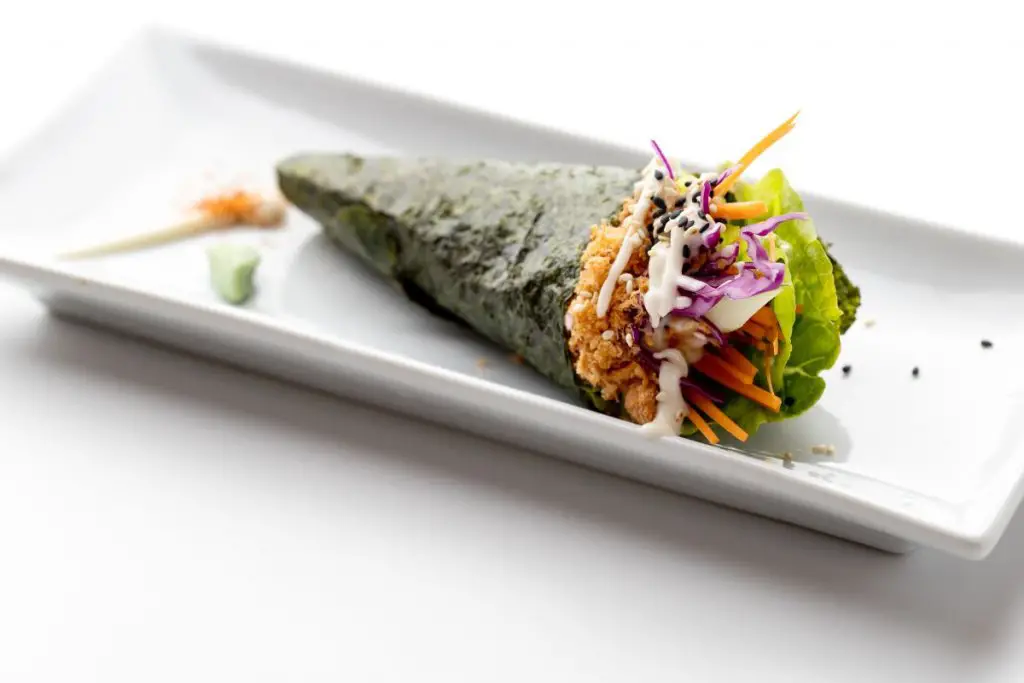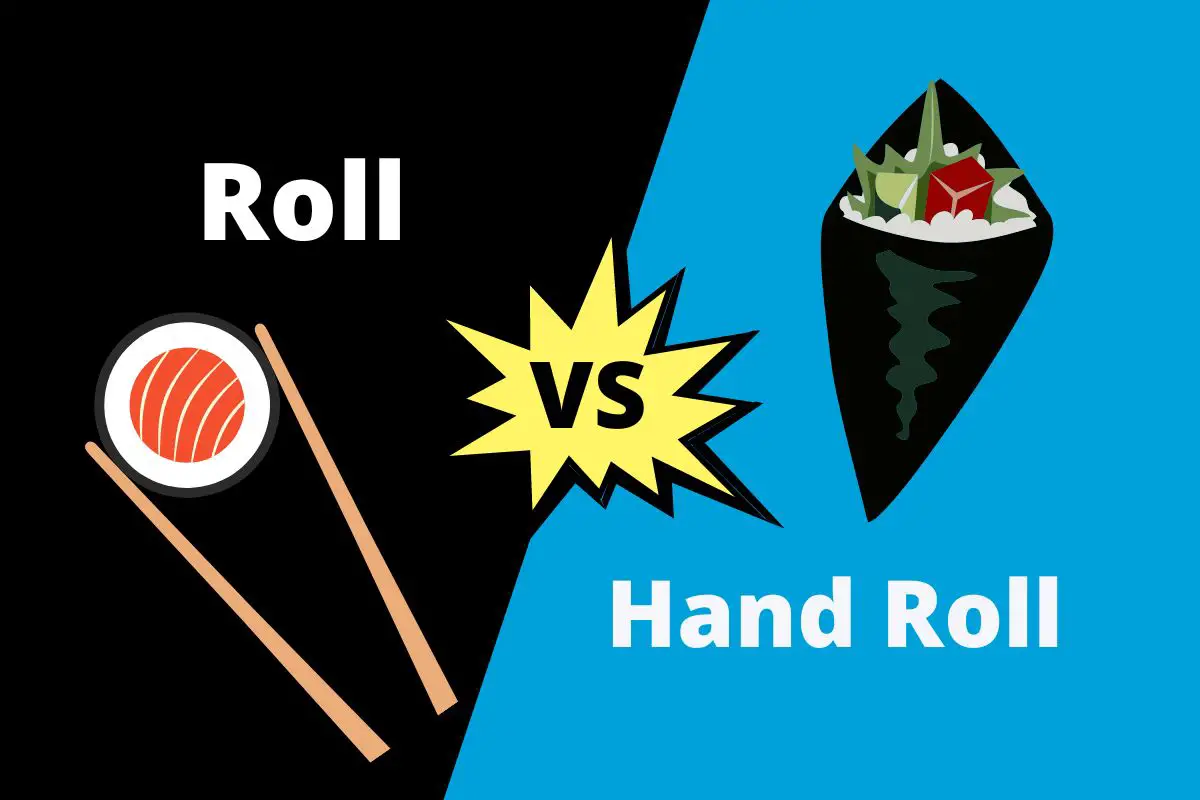From great snacks to delicious desserts, Japanese food is among the most exciting cuisines around the globe. But, the one thing that has been a reigning favorite among people is Japanese sushi. The world of sushi is vast, with many terms and types that can confuse even a pro.
The two such phrases are ‘roll’ and ‘hand roll.’ People tend to get confused between the two sushi dishes, and you should know how these two methods are different. Let’s dive deeper into the article to learn more about these two types of sushi!
Table of Contents
What is a Roll?
The term Maku, which means to wrap or coil, is the source of the other name for a roll in Japan, the Maki roll. Maki sushi uses cooked rice, spicy tuna fish, shellfish, and occasionally fruits and vegetables wrapped in a nori seaweed sheet using bamboo mats.
The outcome is a cylinder-shaped roll that is perfect for sharing with others since you may divide it into 6 or 8 pieces. Each roll can be served to several individuals.

What is a Hand Roll?
A hand roll often referred to as a Tamaki, is a method of folding sushi designed exclusively for one person. Instead of utilizing a cylinder or long tube-like shape when producing a roll, the chef wraps the rice ingredients into a conical shape using seaweed in this technique.
This style of sushi occasionally includes fruits or vegetables. It’s best to serve the hand roll rapidly after preparation and make it by hand. A hand roll is suitable when someone is hungry since it may help satisfy one person’s appetite.

What’s the Difference Between Roll and Hand Roll?
| Roll | vs | Hand Roll |
| Cylindrical shape | Shape | Cone-shaped |
| Also called Maki | Another Name | Also called Temaki |
| Chumaki, Uramaki, Hosomaki, and Futomaki | Types | Only one type |
| Comes in 6-8 pieces | Pieces | Consists of only one big piece |
| Chopsticks | Eating Method | Hands |
Hand Roll vs Roll: Differences Explained
Roll and hand roll differ primarily in their shape and not the ingredients used to make the two. However, other factors shape the difference between sushi roll vs. hand roll. These are:
Size
A roll is small since it’s in pieces. A roll can have 6 to 8 pieces and is presented to many people. This is the primary characteristic that distinguishes a roll from a hand roll.
A hand roll is large and ready for one person to eat since a hand roll is not divided into little pieces intended to serve several people.
Shape
The roll is shaped like a cylinder, and a makisu or bamboo mat helps make it. You can wrap a roll with soy paper in addition to the typical nori seaweed roll.
On the other hand, a hand roll has a cone form. Additionally, you can wrap it in seaweed or nori.
Types
Hosomaki, Chumaki, Futomaki, and Uramaki are a few examples of the various sushi roll varieties. You can chop it into multiple parts depending on the fillings and components used in their production.
Hand rolls come in just one variety – Tamaki. You can consume them whole without needing to chop them into smaller pieces.
Eating Method
Chopsticks are ideal for consuming a roll. The fundamental justification is that a roll comes in tiny pieces; you can handle it correctly with chopsticks. Again, these are typical Japanese dining utensils from the past. You can eat rolls in a single mouthful.
On the other hand, you can enjoy a hand roll with bare hands and dip it in soy sauce. The fundamental reason is that a hand roll comes in the shape of a large cone and is only for one person. It is not wise to use chopsticks on such a large piece since you cannot eat them in one bite.
Making a Salmon Sushi Roll
- First boil water, then add the rice to make the sushi rice. Make sure you mix it well. Cover it and reduce the heat when you’ve finished stirring.
- Let it simmer for around 25 minutes.
- In a bowl, combine three tablespoons of sugar, 1.5 teaspoons salt, and rice vinegar.
- Add the mixture and thoroughly combine it with the cooked rice.
- Put the nori on the bamboo mat and moisten your hands before beginning to roll the sushi.
- Layer the rice next to the nori in a uniform layer. To avoid drowning in the different ingredients, don’t use too much rice.
- Spread thinly-sliced cucumber and raw salmon slices along the center of the roll.
- After that, use the bamboo mat to wrap up the sushi.
- Remove it, and then cut it into six to eight pieces.
Making a Salmon Hand Roll
- Start making the sushi rice the same way you do for a standard sushi roll.
- To make the carrots and cucumbers easier to chew when you bite into your salmon wrap, thinly slice them into slivers.
- Next, make a diagonal incision in a nori sheet.
- To prevent seaweed from sticking to your hands, moisten them. Leave approximately an inch of room around the nori’s edges as you evenly distribute the rice across the sheet.
- Press down in the center of the rice to create a pocket where the fish, carrot, and cucumber will go.
- Starting at the upper right corner, roll the hand roll towards the fish and then to the left to form a cone shape.
- To make a seal, gently wet the edge and press down on it, and your salmon hand roll is ready.
Which is Better: Roll Or Hand Roll?
Despite the close relationship to sushi, these the roll and hand roll are distinct from one another.
If you’re out with a group and want to share an appetizer, you can always opt for roll sushi since it offers more pieces. On the other hand, if you are alone or don’t like sharing your meals, hand roll sushi is a better option for you.

